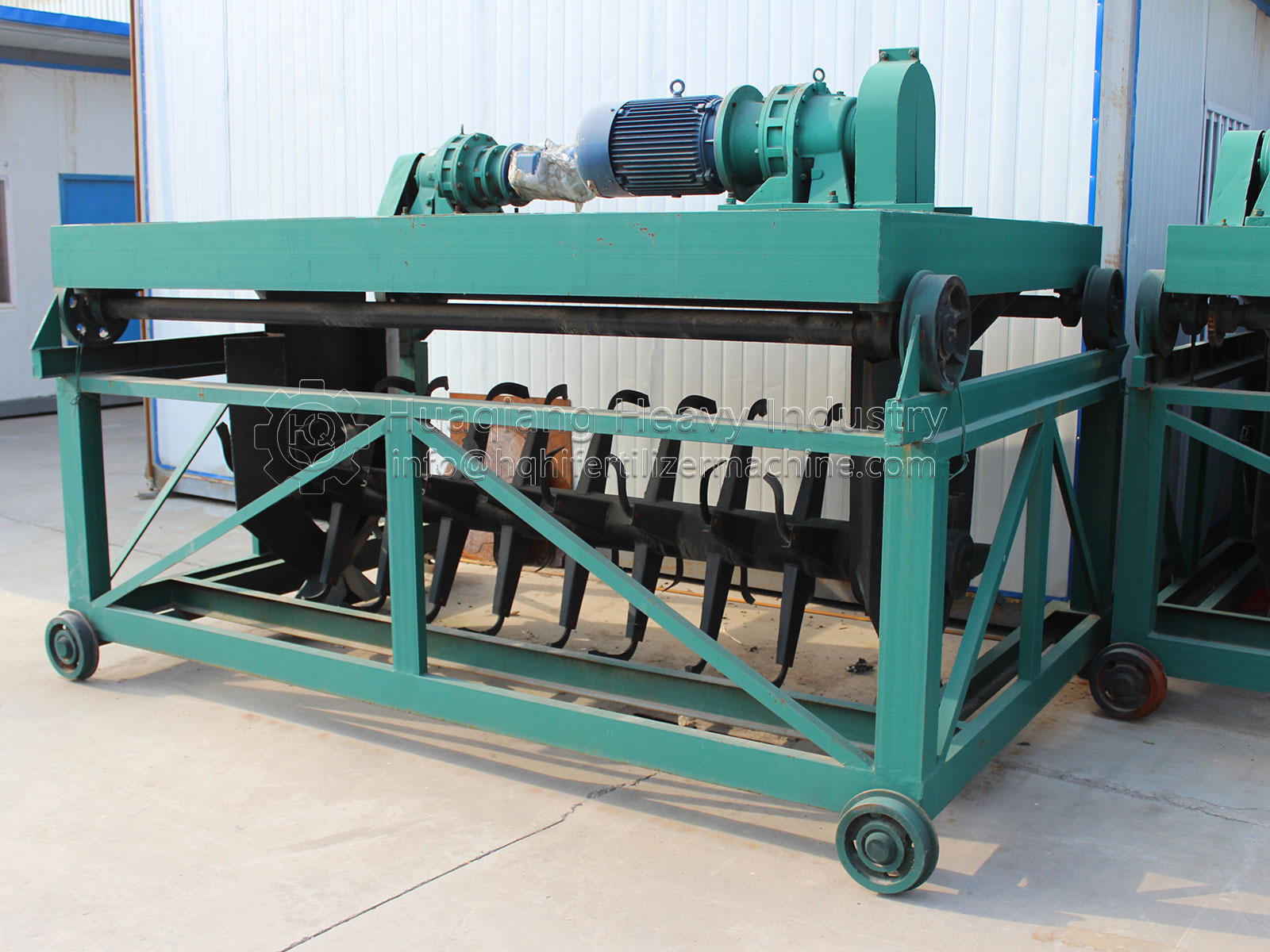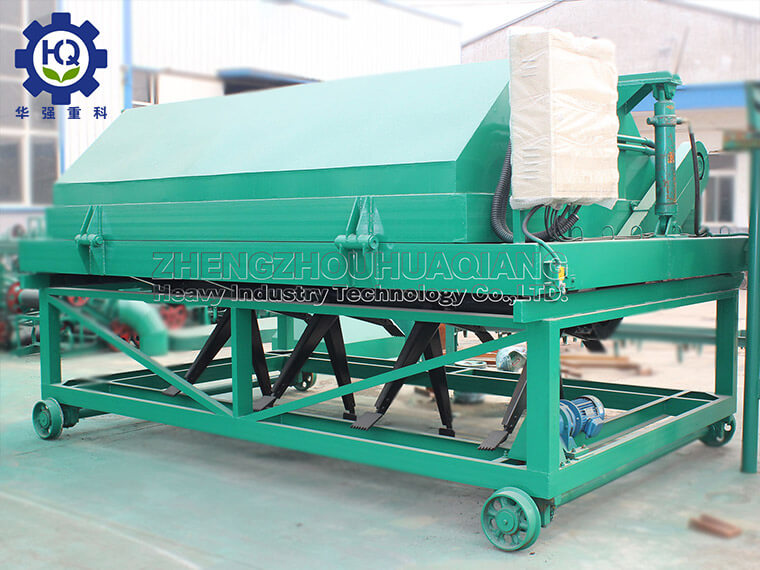With the increasing attention of governments at all levels and the recognition of organic fertilizer by farmers, the production and market of organic fertilizer have entered a period of rapid development. In the process of organic fertilizer production by organic fertilizer machine, feed production equipment or general compound fertilizer production equipment is commonly used, but it is often not suitable for selection due to poor pertinence.
1: The results showed that the crawler type compost windrow turner should be used in the strip stack fermentation. This type of composting method has the advantages of flexibility, simplicity, large treatment capacity and good air permeability. When processing the same volume of organic materials, the area occupied by strip stack fermentation is 2-3 times of that of trough fermentation.
2: Trough fermentation: trough fermentation is generally a partition wall built on the cement floor, and the top of the partition wall is paved with guide rails. The compost windrow turner walks on the guide rail and is equipped with a rail changing mechanism. The tipper can move from one trough to another. Whether it is a self-propelled compost windrow turner or a trough tipper with multiple troughs or one trough with one machine, the operation of the tipper will be more flexible if it has the function of breaking and stirring during the turning process.
3: The main equipment of trough fermentation is chain plate compost windrow turner; the chain plate compost windrow turner can be equipped with bacterial liquid spraying device, which can well meet the process requirements and spray mixed bacterial liquid according to the working characteristics of the compost windrow turner, so as to reduce the mixing process in the early stage.
.jpg)

.jpg)

.jpg)

.jpg)

